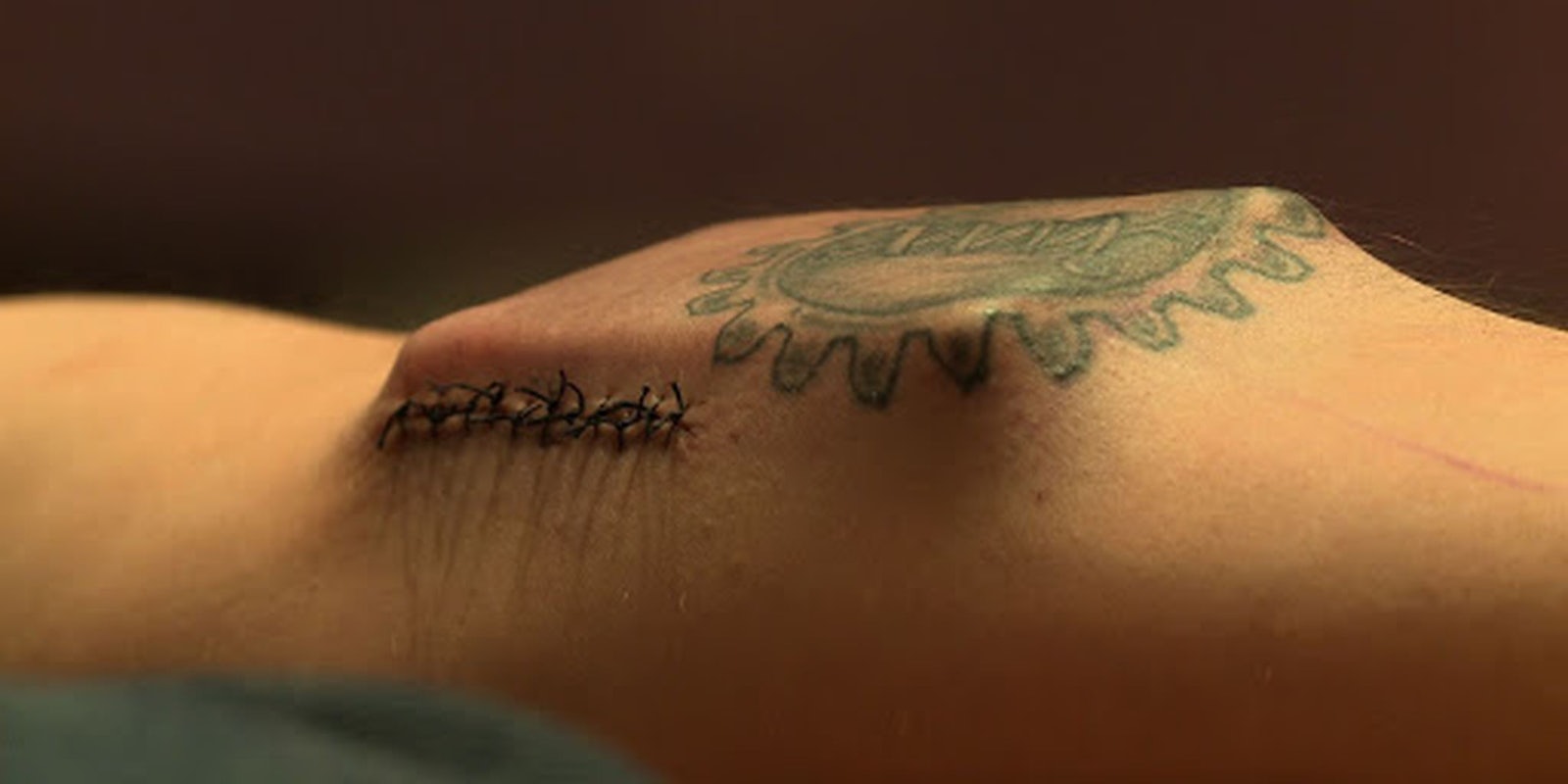BY MAX HOPPENSTELDT
Humanity just made a large, DIY step towards a time when everyone can upgrade themselves towards being a cyborg. Of all places, it happened somewhere in the post-industrial tristesse of the German town of Essen.
It’s there that I met up with biohacker Tim Cannon and followed along as he got what is likely the first-ever computer chip implant that can record and transmit his biometrical data. Combined in a sealed box with a battery that can be wirelessly charged, it’s not a small package. And as we saw, Cannon had it implanted directly under his skin by a fellow biohacking enthusiast, not a doctor, and without anesthesia.
Called the Circadia 1.0, the implant can record data from Cannon’s body and transfer it to any Android-powered mobile device. Unlike wearable computers and biometric-recording devices like Fitbit, the subcutaneous device is open-source and allows the user full control over how data is collected and used.
The Circadia device before being implanted in Cannon’s arm.
Because a regular surgeon wouldn’t be allowed to implant a device unapproved by medical authorities, Collins relied on the expertise of body modification enthusiasts, who had all met in Essen for the BMXnet conference. The procedure itself was so delicate that not only were we not allowed to film the thing, but we were not even able to share where exactly it took place.
One of the pioneers in body modification is Steve Haworth, who conducted the surgery. Despite a family background in medical device engineering, Haworth turned to the more experimental side of altering the human body in the early ’90s, first with piercing and tattoo studios in Phoenix and later by developing modifications like 3-D tattoos and the metal mohawk. Haworth used his own tools for the surgery, and as he’s not a board-certified surgeon, was not able to use anesthetics. He did assure me that “there are pretty amazing things we can do with ice.” It sounded convincing at the time.
Circadia 1.0 was built by Collins and colleagues from his company, Grindhouse Wetware. This team of hackers and artists—self-taught and trained in the traditional sense—has become well-known for converting garages and basements in Pittsburgh into their laboratory for developing the man-machine future.



